Snorkeling Seas
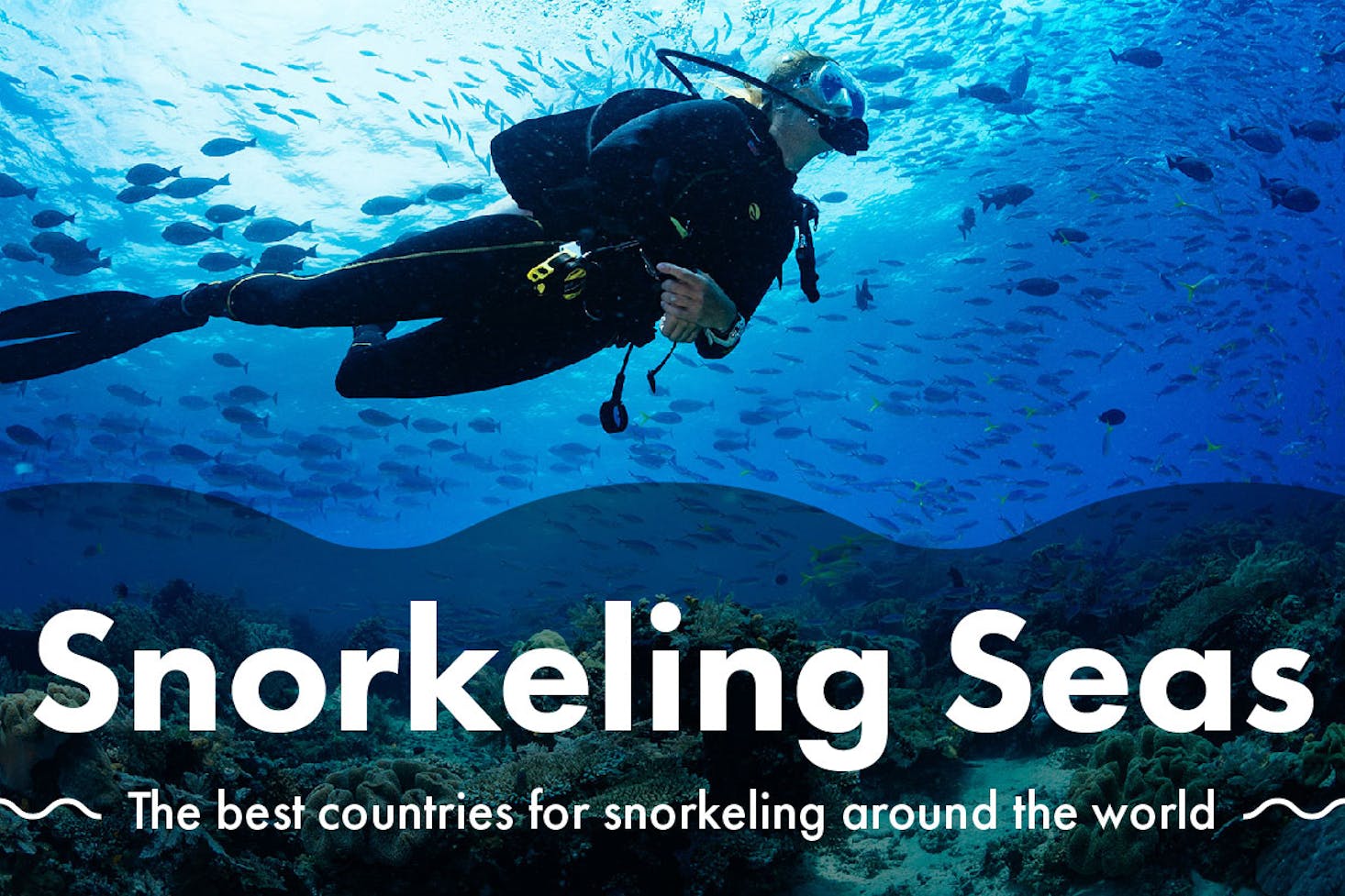
The best countries for snorkeling around the world
The sea is one of the most beautiful views in the world. Exploring under the ocean is even more spectacular. There are stunningly bright coral reefs to swim through and excitingly unique animals to discover.
Snorkeling allows us to recreationally observe and explore the alien worlds just under the ocean surface and it can also leave us with some lifelong memories. But, which oceans and seas are the best for snorkelers and divers to experience?
To find out, we’ve analyzed the world’s seas on several factors such as coral reef areas, fish species, and available snorkeling tours, to reveal the best countries for snorkeling around the world.

Love discounts and traveling?
Sign up for our newsletter and get 10% off your next booking.
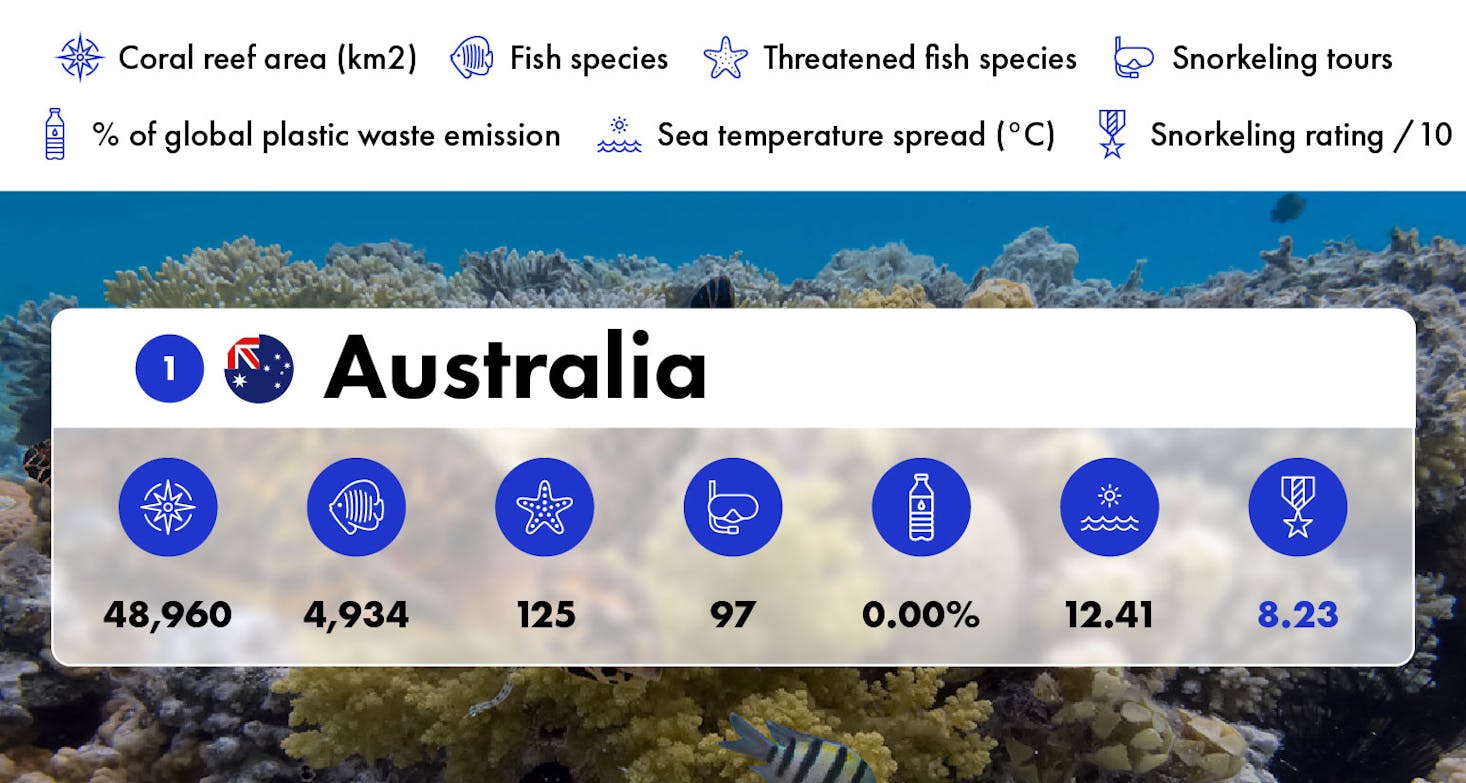
1. Australia - Snorkeling Rating 8.23/10
Coral Reef Area: 48,960 km2
Fish Species: 4,934
Threatened fish species: 125
Snorkeling Tours: 97
% of global plastic waste emission: 0%
Sea Temperature Spread: 12.41° C
Australia ranks as the best place to visit for snorkeling in the world, with a snorkeling rating of 8.23/10. Australia is home to the second largest area of coral reef in the world, just shy of 49,000 km2. This equates to around 17.22% of the world’s total coral reef area. Australia also contributes 0% to global plastic waste emission, actively keeping our oceans clean. Australia is home to the famous Great Barrier Reef, with Cairns the best city to visit for access to this renowned coral reef.
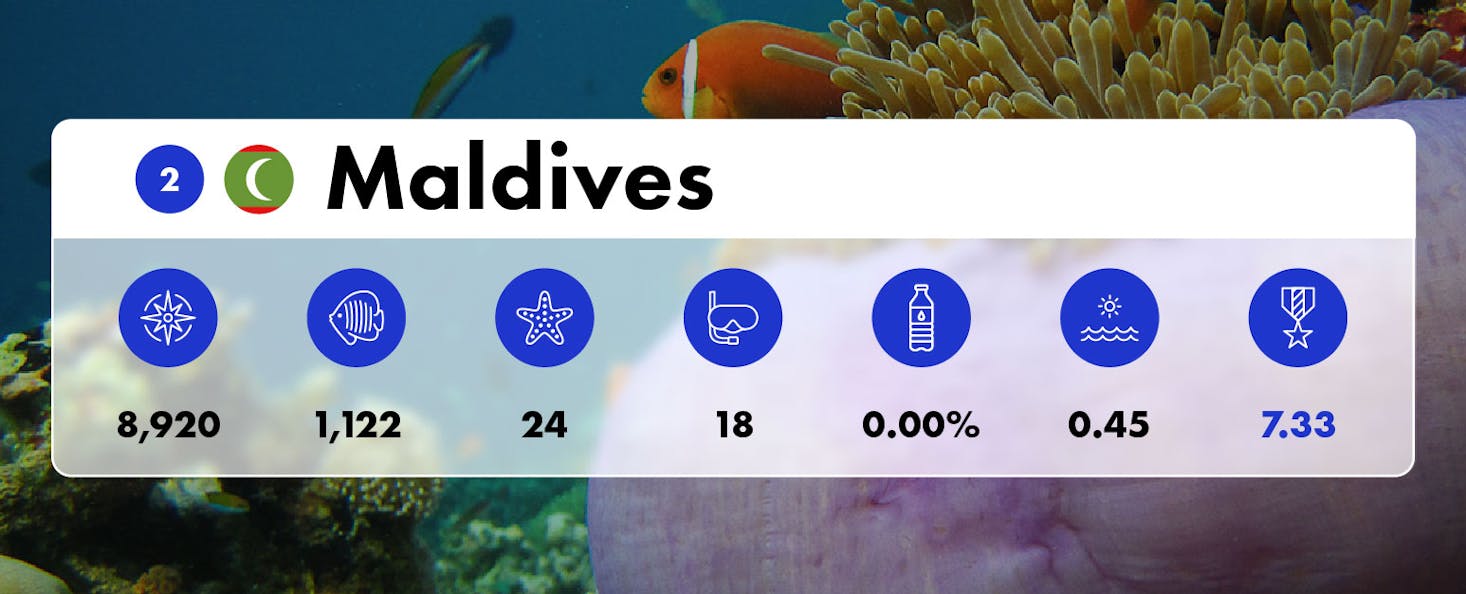
2. Maldives - Snorkeling Rating - 7.33/10
Coral Reef Area: 8,920 km2
Fish Species: 1,122
Threatened fish species: 24
Snorkeling Tours: 18
Share of global plastic waste emission: 0%
Sea Temperature Spread: 0.45° C
The Maldives take the second position for best snorkeling location in the world. The Maldives are home to almost 9,000 km2 of coral reefs, equating to 3.14%% of the world’s total coral reefs. The Maldives score 7.33/10 for snorkeling with over 1,100 different fish species to see and a low sea temperature spread of 0.45° C, meaning you’ll likely only need one set of gear and one wetsuit wherever you go snorkeling here.
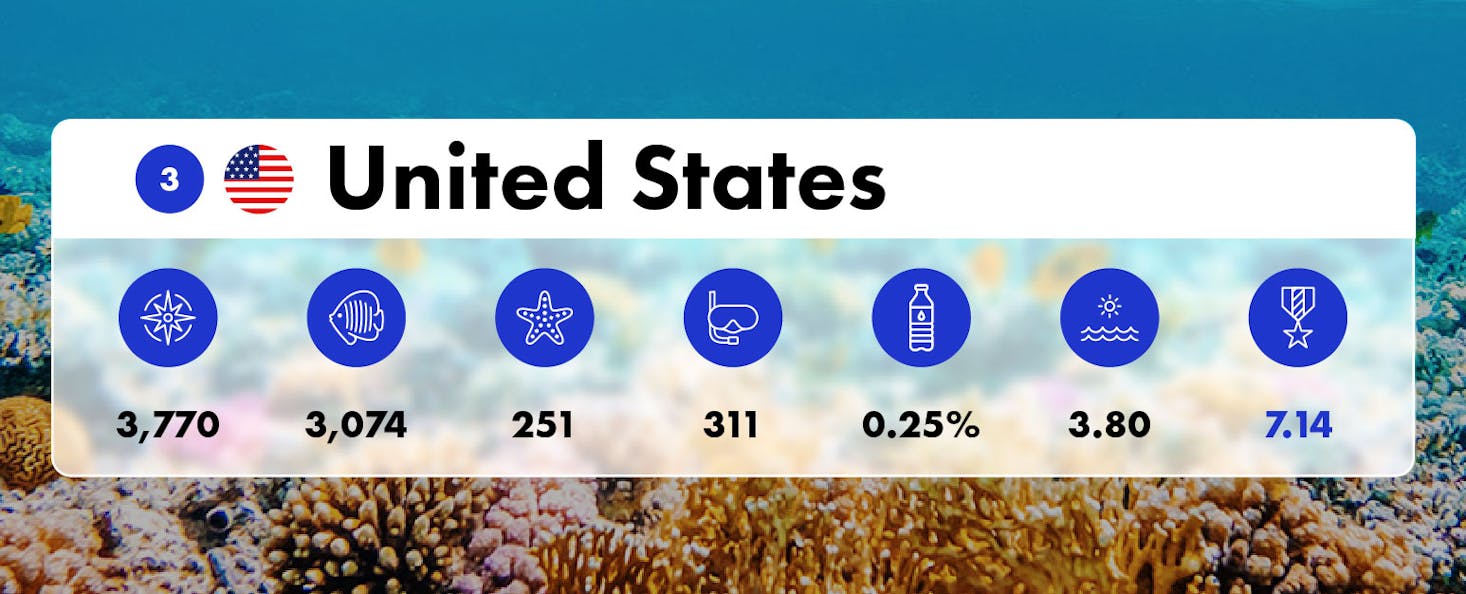
3. United States - Snorkeling Rating - 7.14/10
Coral Reef Area: 3,770 km2
Fish Species: 3,074
Threatened fish species: 251
Snorkeling Tours: 311
% of global plastic waste emission: 0.25%
Sea Temperature Spread: 3.8° C
The United States is the joint third-best destination for snorkeling in the world alongside Cuba, both with snorkeling scores of 7.14/10. The US has the highest number of endangered fish species, meaning there are more rare species to catch a glimpse of in the US than any other country on this list, along with a solid amount of coral reef area (3,770 km2). Florida’s Florida Reef is the third-largest coral reef system in the world, making Tallahassee a prime destination for snorkelers.
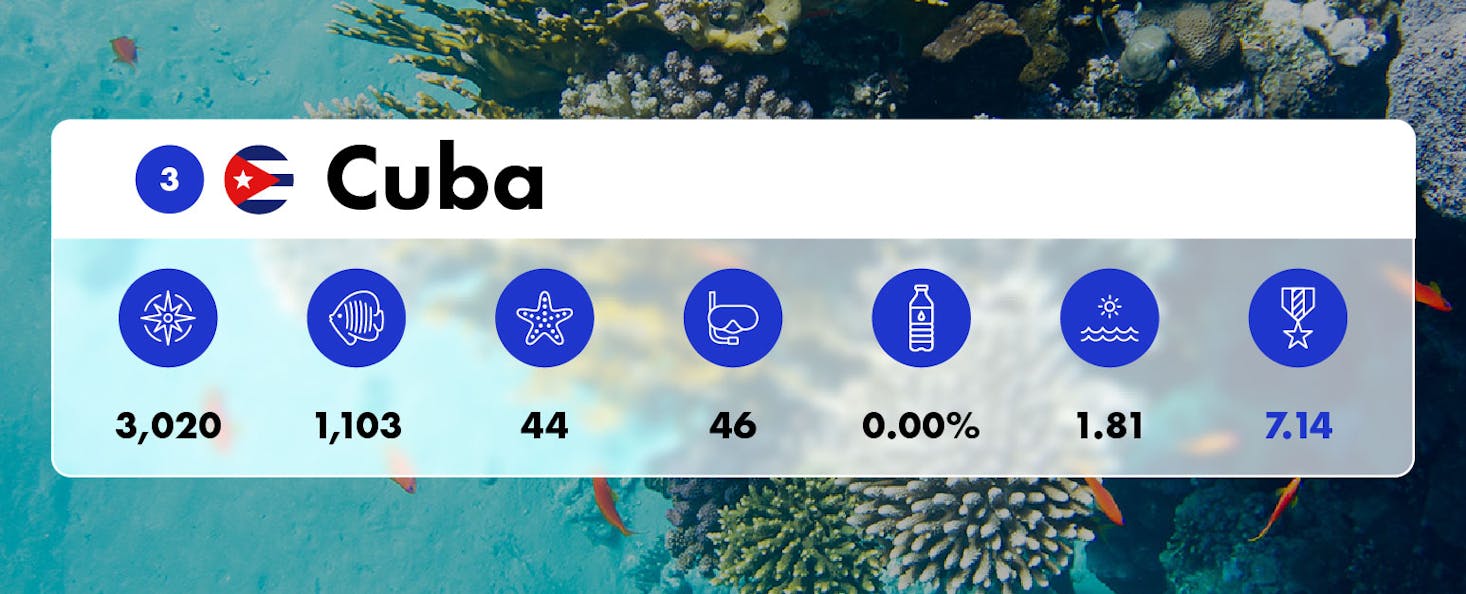
3. Cuba - Snorkeling Rating - 7.14/10
Coral Reef Area: 3,020 km2
Fish Species: 1,103
Threatened fish species: 44
Snorkeling Tours: 46
% of global plastic waste emission: 0%
Sea Temperature Spread: 1.81° C
Cuba earns a snorkeling rating of 7.14/10, earning it the joint third-best position with the United States. With a decent area of coral reef (3,020 km2), plenty of variety of fish species and endangered fish species, Cuba also contributes 0% to the global plastic waste emission. You can find 46 snorkeling tours on offer on your next trip to Cuba where the sea temperature is fairly consistent, ranging from 27.5 to 30.53° C.
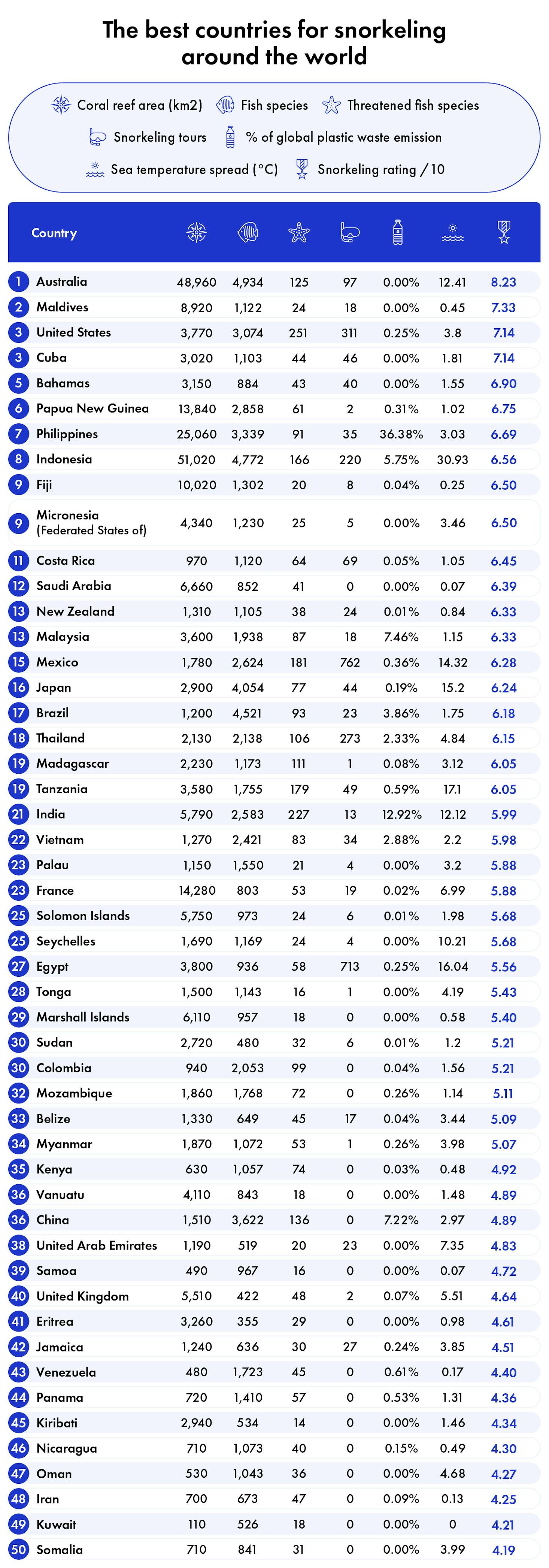
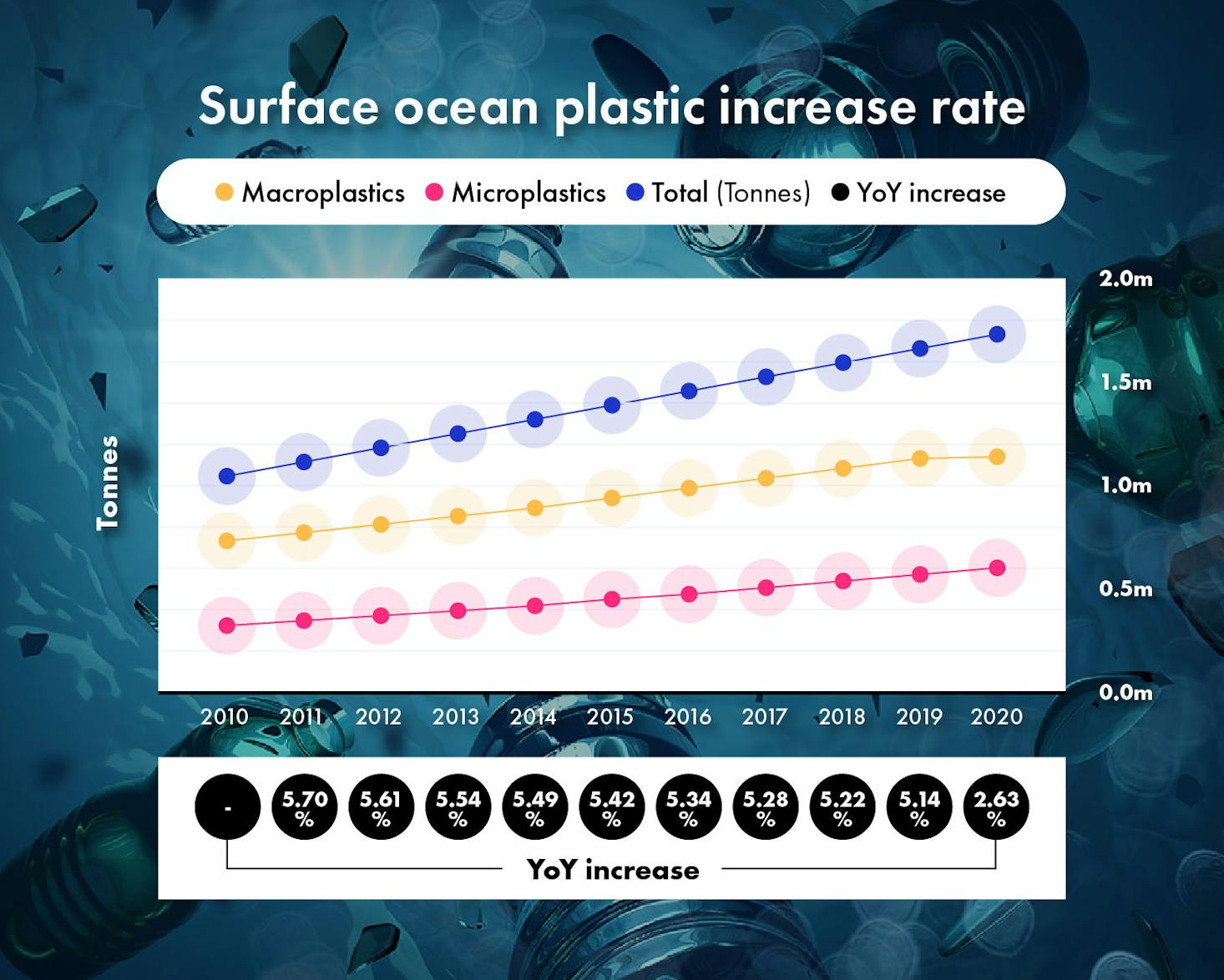
Surface ocean plastic increase rate
The conservation of our oceans and seas is of paramount importance, and coral reefs and our oceans are in threat from waste and pollution. Plastic waste is filling up our oceans and damaging wildlife.
Snorkeling is made possible by having clean, clear, and healthy surface oceans which provide habitats for coral reefs and all sorts of fish and plant species.
Data has shown that the volume of plastic in our surface oceans is steadily increasing at a rate of 5.14% each year. As of 2020, there was just short of twice as much macroplastic in our surface oceans as there was microplastic, with the total volume of plastic in our surface oceans standing at a saddening 1,730,000 tonnes.
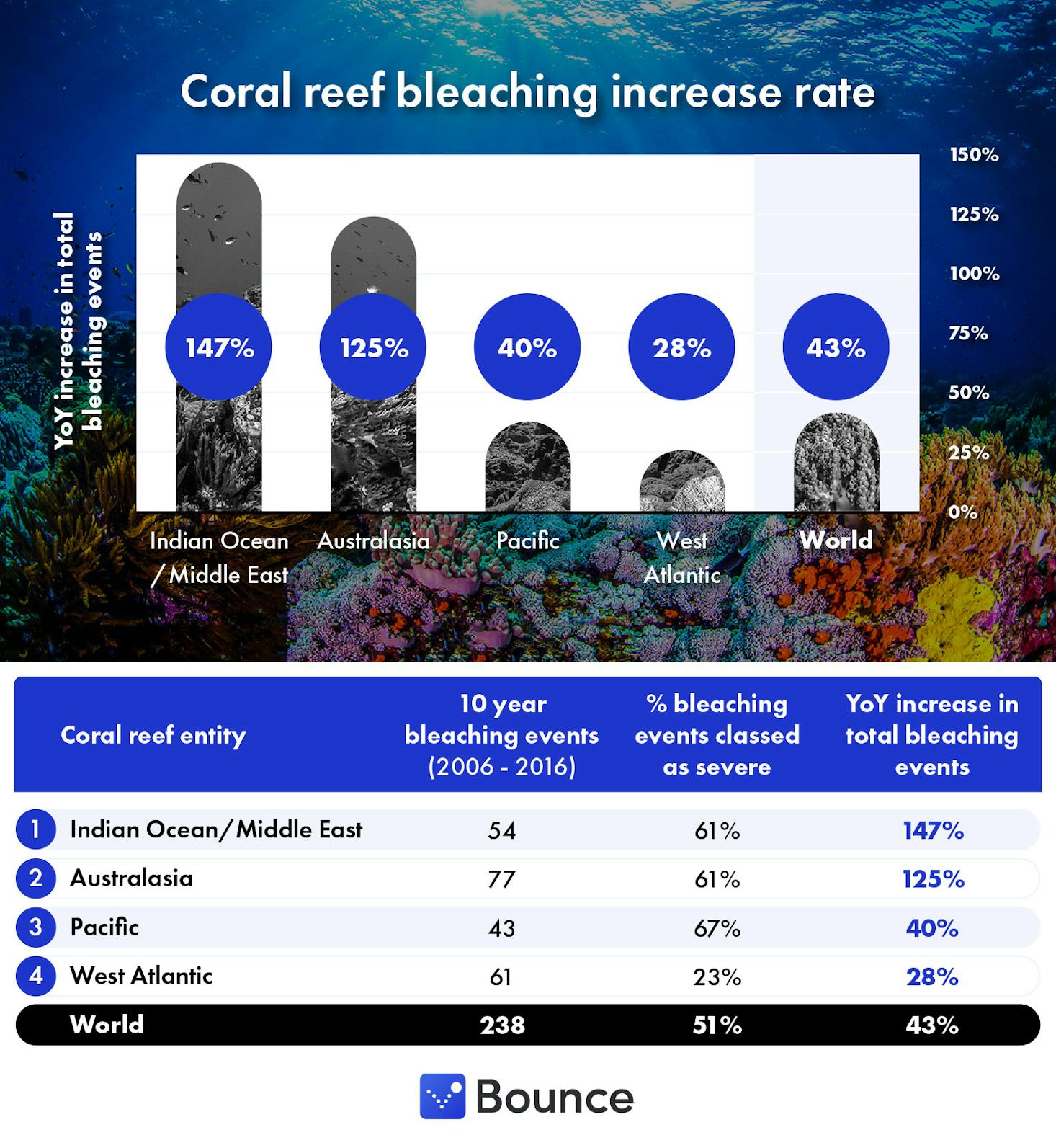
Coral reef bleaching increase rate
Not only is the increasing level of plastics in our surface oceans ruining snorkeling experiences and endangering wildlife, but our coral reefs themselves are experiencing threatening bleaching events more commonly than ever before.
Coral reef bleaching is when corals are exposed to extreme warming and expel algae, algae which they rely on for energy production. Bleaching starves corals and can be fatal. The loss of algae also turns corals completely white, owing to the name bleaching.
Coral reefs can and do recover from intense bleaching. However, they need enough time between events to do so, around 10 to 15 years. If the rate of increase of bleaching events continues to rise, there will not be enough time for coral reefs to recover and many will die.
Investigating the most recent available data, the world’s coral reefs experienced a shocking 238 bleaching events in the decade from 2006-2016. Of these 238, just over half were considered severe events where more than 30% of corals in the reef were damaged.
Here are where coral reefs were most affected by bleaching events over the 10 years spanning from 2006 to 2016. To put these numbers into perspective, worldwide coral reefs experienced an average year-on-year increase of 43% in the number of bleaching events in the same time frame.
1. Indian Ocean / Middle East - 147% YoY increase in total bleaching events
The coral reefs in the Indian Ocean saw a year-on-year increase of 147% in the number of bleaching events they experienced. This means the number of times coral reefs in the Indian Ocean were damaged by bleaching more than doubled on average every year from 2006 to 2016. 61% of the 10-year total bleaching events were classed as severe.
2. Australasia - 125% YoY increase in total bleaching events
Australasia coral reefs also saw their number of bleaching events more than double on average each year during the same period. This is significantly higher than the average increase in bleaching events for worldwide coral reefs. 61% of the 10-year total bleaching events were classed as severe.
3. Pacific - 40% YoY increase in total bleaching events
The Pacific showed a slightly lower rate of increase in bleaching events than the worldwide baseline of 43%. While this is good, the number of bleaching events affecting coral reefs in the Pacific is still increasing at an alarming rate. 67% of the 10-year total bleaching events were classed as severe.
4. West Atlantic - 28% YoY increase in total bleaching events
West Atlantic coral reefs saw the lowest rate of increase in bleaching events, however, they still saw the second-highest number of events over the 10-year period. One positive, however, is that just 23% of these events were classed as severe.
Methodology
An initial list of countries was taken from coral.unep with reference to each country with coral reefs. The area of coral reefs for these countries was also taken from this source. The following data were extracted only for the countries with coral reefs. The snorkeling rating /10 for each country was calculated as a combined score of the 6 factors.
Data for the number of different fish species and the number of endangered fish species was taken from rainforests.mongabay.
The number of snorkeling tours on offer was recorded from Tripadvisor.
The share of global plastic waste emitted to the ocean was taken from our world in data.
The sea temperature spread was calculated by finding the difference between the highest and lowest sea temperatures in each country as of July 2022 from seatemperatures.net.
The levels of plastics in our surface oceans and coral reef bleaching event data were also taken from our world in data. YoY increase in total bleaching events was calculated by averaging the increase in bleaching events each year from 2006 to 2016.

Love discounts and traveling?
Sign up for our newsletter and get 10% off your next booking.
